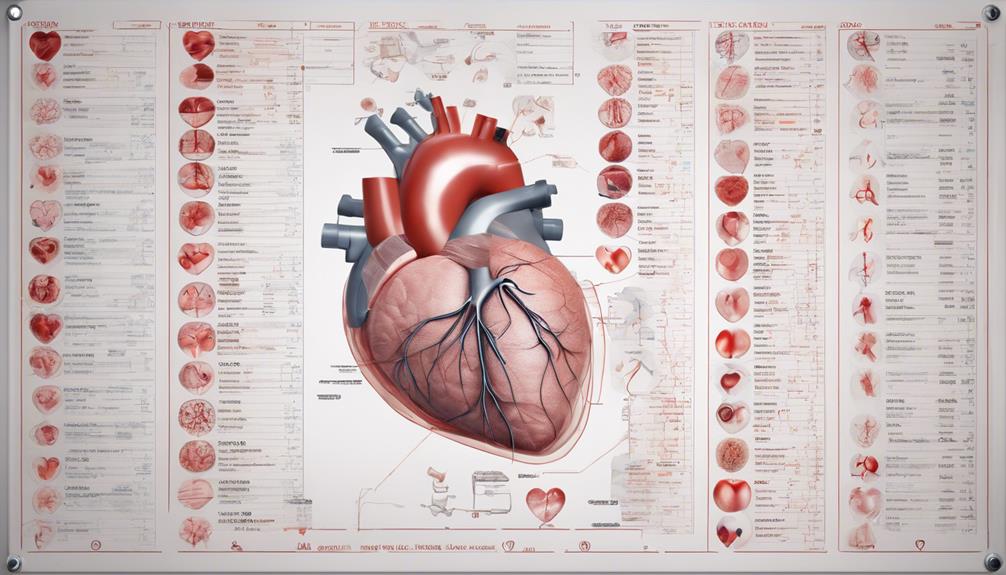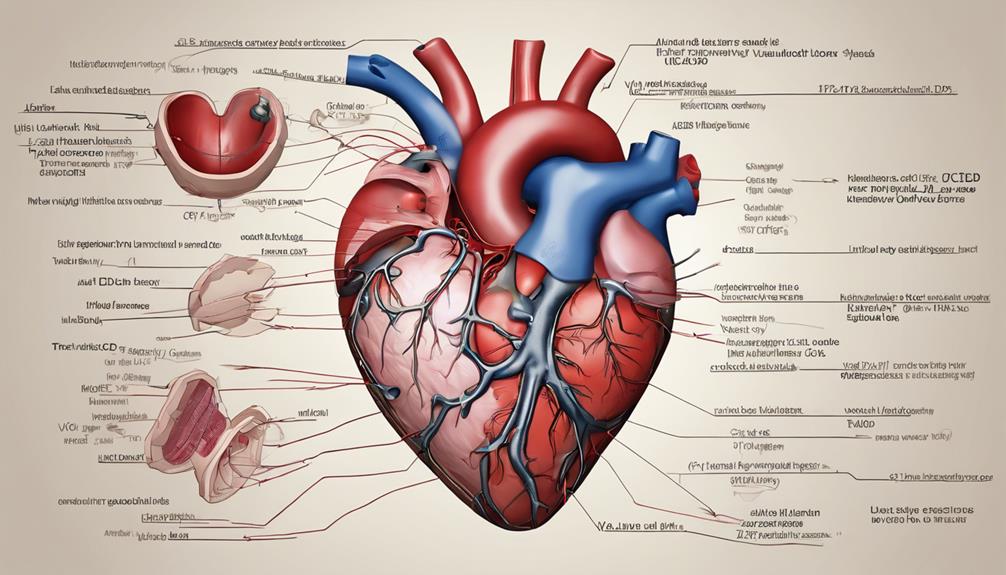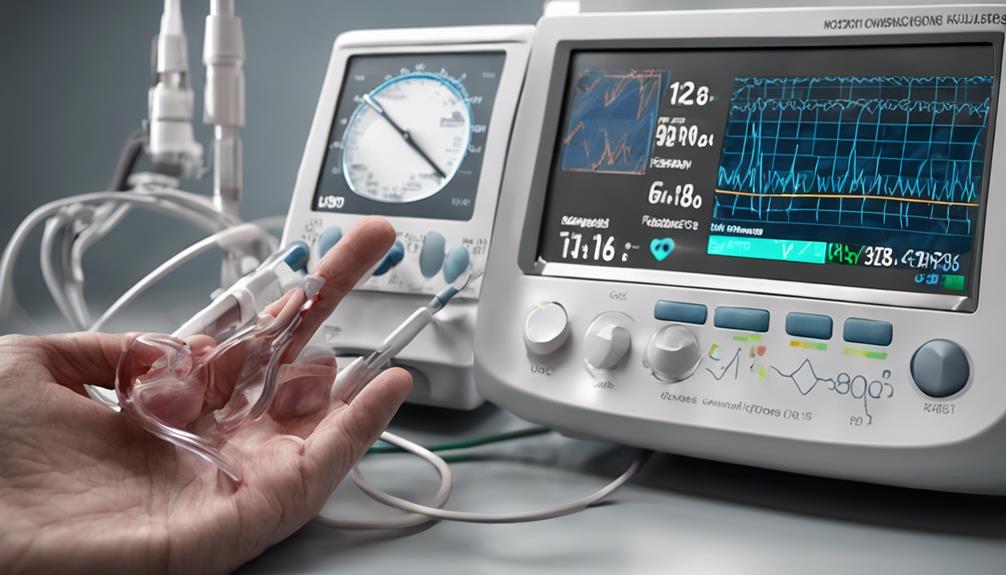Let’s delve into the complexities of locating the ICD-10 code for Valvular Heart Disease.
It's a nuanced process involving specific classifications that capture the diverse nature of this condition. Understanding the nuances of these codes is essential for accurate documentation and billing purposes.
Join us as we navigate through the complexity of assigning the right ICD-10 code for Valvular Heart Disease, shedding light on the crucial details that can impact patient care and reimbursement outcomes.
Key Takeaways
- Accurate coding is essential for billing and documentation.
- Understanding nuances of each code is crucial for accuracy.
- Proper utilization of ICD-10 codes is necessary for compliance.
- Detailed documentation supports accurate coding and treatment planning.
Overview of Valvular Heart Disease ICD-10 Codes
When assigning ICD-10 codes for valvular heart disease, it's crucial to accurately capture the specific condition affecting the heart valves, such as mitral stenosis or aortic valve disorders. Proper coding is essential for precise documentation and billing purposes. Understanding the nuances of each code, like I05.0 for mitral stenosis or I35.0 for aortic valve stenosis, can significantly increase coding accuracy.
Free trials of coding software compliant with CMS guidelines can assist in enhancing coding proficiency for valvular heart diseases. This trial period allows for practical application of the codes, aiding in a better understanding of how to code various valvular conditions effectively.
Coding Guidelines for Valvular Heart Disease

Transitioning from an overview of valvular heart disease ICD-10 codes, we'll now explore the detailed coding guidelines essential for accurately documenting and billing for various types of valve disorders.
Understanding and correct usage of the target ICD-10-CM code without changing it's crucial in coding valvular heart diseases. Chapter-specific coding guidelines for valvular heart disease are conveniently shown in the ICD-10-CM manual, providing section level details related to your ICD-10-CM codes.
These guidelines offer crucial instructions for accurate coding, ensuring proper reimbursement and streamlined healthcare operations. For further clarification, links to CMS documents can be referenced to stay updated on any changes or additional instructions.
Specific ICD-10 Codes for Valve Disorders
Specific ICD-10 codes delineate various valve disorders, providing a structured system for accurate diagnosis and billing in healthcare settings. The target of these codes is to enable precise identification of conditions related to valvular heart disease. Among the codes in the ICD-10-CM Volume are those that specifically address Nonrheumatic aortic valve disorders, aiding in the classification and diagnosis of these issues. Proper utilization of these codes is crucial for coding guidelines compliance and ensuring appropriate reimbursement for the services provided. Understanding the risk factors associated with valve disorders is fundamental in utilizing the correct codes for billing and tracking purposes. Below is a table highlighting some common ICD-10 codes for valve disorders:
| ICD-10 Code | Description | Usage |
|---|---|---|
| I05.0 | Rheumatic mitral stenosis | Diagnosis of rheumatic mitral stenosis |
| I35.0 | Nonrheumatic aortic valve stenosis | Identification of nonrheumatic aortic stenosis |
| I34.0 | Nonrheumatic mitral insufficiency | Billing for nonrheumatic mitral regurgitation |
Coding Scenarios for Valvular Heart Disease

To accurately assign ICD-10 codes for valvular heart disease, it's crucial to understand the specific coding scenarios associated with conditions like aortic stenosis, regurgitation, mitral stenosis, and regurgitation.
When dealing with valvular heart diseases, the following considerations should be taken into account:
- Differentiating Between Rheumatic and Nonrheumatic Valvular Heart Diseases: Distinguishing between these types is vital as the treatment and ICD-10 code selection vary significantly.
- Adhering to Coding Guidelines: Following CMS documents related to accurate ICD-10-CM coding ensures proper classification of valvular heart disease cases and supports appropriate patient care.
- Thorough Documentation for Medical Record-Keeping: Detailed documentation of valvular heart disease cases is essential for coding accuracy, treatment planning, and ensuring follow-up care for patients with valve disorders.
Billing and Reimbursement Considerations
Navigating the intricate landscape of billing and reimbursement for valvular heart disease cases requires meticulous attention to coding accuracy and documentation integrity. Ensuring the correct ICD-10-CM codes are used is crucial for accurate billing and reimbursement in cases of valvular heart disease. Proper documentation aligning with the medical classification as listed in the coding guidelines can significantly impact the financial outcomes related to valvular heart disease treatments. Understanding the nuances of coding, including the Excludes 1 and Excludes 2 notes, is essential to increase accuracy in billing processes within the circulatory system. Healthcare providers must be diligent in selecting the appropriate codes such as I05.0, I05.8, I34.0, I35.0, and I35.8 to optimize reimbursement for treatments and procedures related to valvular heart disease.
| Key Points | Benefits of Implementation |
|---|---|
| Use accurate ICD-10 codes | Facilitates proper billing |
| Follow coding guidelines | Increases reimbursement potential |
| Document comprehensively | Ensures financial optimization |
Frequently Asked Questions
What Is the ICD-10 Code for Valvular Heart Disease Unspecified?
We can provide the ICD-10 code for valvular heart disease unspecified, which is I08.9. This code encompasses various rheumatic multiple valve diseases not elsewhere classified.
It's crucial to accurately document unspecified valvular heart disease for proper coding and billing purposes. I08.9 aids in tracking and monitoring cases where the specific valve involvement isn't specified, ensuring comprehensive healthcare management.
What Is Valvular Heart Disease?
When it comes to valvular heart disease, it encompasses a range of conditions affecting the heart valves, causing dysfunction. These issues can include aortic and mitral valve problems like stenosis or regurgitation, which can be present from birth or develop later in life.
Symptoms often involve breathing difficulties, chest discomfort, and feeling tired.
Diagnosis involves a thorough evaluation, including history, examination, and tests like an echocardiogram to evaluate valve function accurately.
What Is the ICD-9 Code for Valvular Heart Disease?
Sure thing!
The ICD-9 code for valvular heart disease is 424.0. This code specifically pertains to aortic valve disorders.
Accurate coding of valvular heart disease is crucial for maintaining precise medical records.
The ICD-9 system predates the current ICD-10 system, and having knowledge of the ICD-9 code for valvular heart disease is valuable for historical medical record analysis.
What Is the ICD-10 Code for Multiple Valvular Abnormalities?
We've got the answer you need! The ICD-10 code for multiple valvular abnormalities is I08. This code encompasses a range of rheumatic valve diseases affecting more than one heart valve.
It's crucial to use the correct code for accurate medical records and treatment plans. Remember, the devil's in the details when it comes to coding valve diseases, so precision is key.
Let's ensure accurate coding for comprehensive patient care.
Conclusion
In navigating the complex landscape of Valvular Heart Disease ICD-10 codes, we've charted a course towards effective diagnosis and treatment. Like skilled coders deciphering intricate patterns, we've unlocked the codes that hold the key to managing this condition.
Just as a surgeon's steady hand repairs a damaged valve, our meticulous approach ensures proper documentation and billing for optimal patient care.
Let's continue to decode the language of the heart, guiding patients towards healthier tomorrows.









